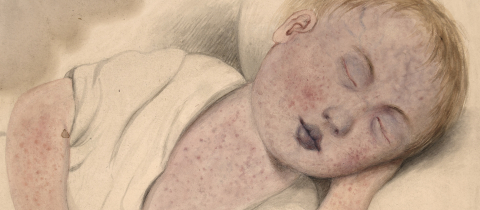We are drowning in fraud. Simply defined, fraud is intentional deception, usually for monetary gain. We have become used to robo-calls telling us that we have been subjected to a tax audit and had better call the given number to clear things up. We have learned to dismiss messages from some unfortunate soul supposedly stuck in a foreign country who is in in need of funds to get home. Such scams are annoying, but at least not life threatening. The same cannot be said for counterfeit medications, an immense problem with an estimated global annual worth in excess of $100 billion!
We assume that if we take an aspirin tablet that is indicated to contain 325 mg of acetylsalicylic acid on the label, then that is exactly what we are getting. That assumption is almost certainly correct since selling fake aspirin is not a lucrative business. But buying Kamagra online is a different story. This pill supposedly contains sildenafil citrate, the active ingredient in Viagra, but costs a fraction of Pfizer’s prescription version. It is produced by a company in India and therein lies a problem. Major pharmaceutical companies such as Pfizer, Merck and Bayer follow exacting manufacturing conditions that ensure their drugs contain the active ingredient in the right dose with their procedures being monitored by government regulatory agencies. The situation is not the same in India where governmental oversight is much more lax. Drugs that have been poorly manufactured or have deteriorated due to improper storage and are therefore “substandard,” can still make it to market. Kamagra may or may not contain sildenafil, and even if it does, the dosage may be suspect.
So, better stick to Viagra. If you get it by prescription in Canada or the U.S., you will get the right stuff. But elsewhere, for example in Mexico, you can walk into a pharmacy and buy Viagra without a prescription. And you will get a bottle with pills that look just like the authentic stuff but may be fake, produced by some clandestine manufacturer in Asia. Still, this is not a life-threatening situation. But what if you are travelling in Africa and develop an infection that requires treatment with antibiotics? Unfortunately, antibiotics are the most commonly counterfeited drugs, mostly sold in low-income nations where proper pharmaceuticals are prohibitively expensive. Now we are looking at a potentially life-threatening situation!
Fake antibiotics and fake erectile dysfunction drugs are not the only problem. Fake anti-anxiety drugs like alprazolam (Xanax), lorazepam (Ativan), and diazepam (Valium), as well as attention deficit disorder meds such as methylphenidate (Ritalin) or amphetamine (Adderall) are also available on the street and on the internet. They may look like the real thing and their counterfeitness is only revealed with the discovery that the drug doesn’t work. The COVID-19 pandemic provided new opportunities for fraudsters who quickly came up with fake versions of hydroxychloroquine. A curious situation since the fakes worked as well as the authentic version, meaning not at all. Illicit drugs are a different case, with counterfeiting being much more prominent. Lactose powder may be used to dilute heroin, dried herbs masquerade as cannabis, methamphetamine may be sold as cocaine and illegally manufactured “designer drugs” can contain toxic impurities.
Legitimate generic drugs have also been targeted by counterfeiters. Once the patent on a brand-name prescription drug has expired, it is perfectly legal for a manufacturer to sell a generic version as long as it has the same active ingredient and the same bioavailability as the original. Minor differences in binding agents, fillers and colours are allowed if they have been shown not to interfere with the efficacy. Generic drugs are generally much lower-priced because the manufacturer does not have to recover the cost of the research it took to bring the brand-name drug to market. In Canada, about 75% of all prescriptions are filled with generic drugs with very few issues arising. But generic drugs can be counterfeited just like trade-name drugs, meaning that they may contain no active ingredient, the wrong ingredient or the wrong dose of the right ingredient.
There is yet another problem. The Canadian and U.S. generic companies are held to the same standard as the brand-name companies with every aspect of production being monitored. Products are constantly checked for purity and immediate recalls are issued should a problem appear. However, more than half of the generics sold here are imported from India or China where they are produced in licensed plants. But just because the plants have been licensed doesn’t mean they all follow best manufacturing practices. Government inspections are spotty, and the lure of taking shortcuts to maximize profits is inviting. This may mean using impure solvents, unclean conditions, improper testing for bioavailability or contamination with foreign materials such as tiny shards of glass once detected in a generic version of Lipitor, the cholesterol-lowering drug. Inspectors from the U.S. FDA sporadically travel to India to inspect plants producing drugs for the American market. However, these trips are announced in advance allowing the facilities to prepare and put their best face forward. Even for brand-name and generic meds produced in North America, about 80% of the active ingredients are imported from India or China but hopefully are checked for impurities before being formulated into the final product.
Counterfeiters and sloppy Asian generic drug manufacturers are a big problem, as the brand-name pharmaceutical industry relishes in pointing out. But there are plenty of skeletons in the brand-name closet as well. Companies have been fined for promoting off-label use of drugs, for paying kickbacks to physicians for prescribing certain drugs and for withholding known side effects. In a paper submitted in 2000 to the New England Journal of Medicine describing studies on the painkiller Vioxx, Merck researchers failed to disclose some cases of cardiovascular events in the experimental group of which they were aware.
Of course, neither the generic nor the brand-name drug industry should be universally impugned because some cases of fraud have come to light. In North America 99% of prescription drugs available in our pharmacies are properly manufactured and do conform to label information. While no drug performs as well as its exuberant television ads proclaim, benefits do outweigh risks when the meds are appropriately prescribed. On the other hand, drug counterfeiters should be vigorously pursued for enticing people play Russian roulette with their pill bottles. Sadly, we will never be able to eliminate counterfeiters. The problem has a long history, evidenced by the appearance of fake cinchona bark to treat malaria back in the 17th century. As long as the road of deception is paved with money, there will always be fraudsters who will take it.







